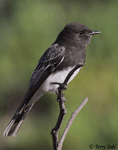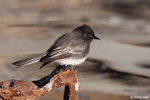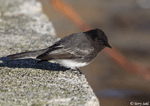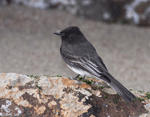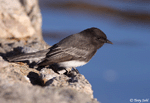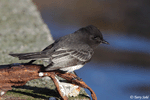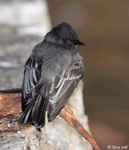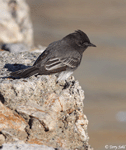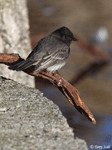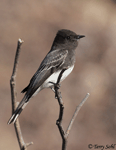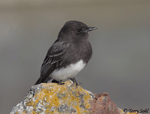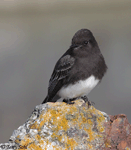| Length: 7 inches | Wingspan: 11 inches | Seasonality: Non-resident in South Dakota |
| ID Keys: Dark upperparts with white belly, | ||
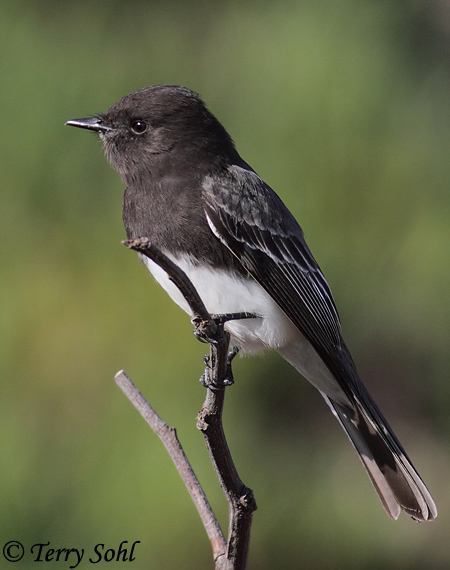 The
Black Phoebe is a distinctive flycatcher with a crisp black and white
pattern. They are almost always found near sources of water,
presumably due to the need for a source of mud to build their nests.
They are often seen sitting on a high perch, occasionally pumping their
tail, as they search for an insect. When an insect is spotted, they
will fly out from their perch to grab it, often in mid-air, and then often
returns to the same perch to consume its meal.
The
Black Phoebe is a distinctive flycatcher with a crisp black and white
pattern. They are almost always found near sources of water,
presumably due to the need for a source of mud to build their nests.
They are often seen sitting on a high perch, occasionally pumping their
tail, as they search for an insect. When an insect is spotted, they
will fly out from their perch to grab it, often in mid-air, and then often
returns to the same perch to consume its meal.
Habitat: Black Phoebes can be found in a variety of open habitats, but they are almost always found near a water source. They have adapted well to a human presence and often will nest and forage in and around urban parks and other favorable locations.
Diet: The diet is almost exclusively insects and spiders. They have also been known to sometimes eat minnows and other small fish.
Behavior: Catches much of its food by flycatching (flying out from a perch to grab insects in mid-air). They will also glean insects from plant foliage, or skim the water's surface to pick up aquatic insects or small fish.
Nesting: The nest is built of mud mixed with plant material, and placed on a sheltered location such as under a bridge, on a cliff, or under the eaves of a building. Nests are often used for multiple years. The female alone incubates the eggs, but both parents will help to raise the young.
Interactive eBird Map: Click to access an interactive eBird map of Black Phoebe sightings
Song: Song of the Black Pheobe is a pair of high whistled notes, uttered in a repeating series.
Migration: They are a permanent resident throughout much of their range, but birds at higher elevations and those at the northern edge of their range will migrate to more hospitable climates for the winter.
Similar Species: Eastern Phoebe
Conservation Status: The IUCN currentlys shows the Black Phoebe as a species of "Least Concern". Populations appear to be stable and may even be increasing.
Further Information: 1) Cornell's All About Birds - Black Phoebe
2) Whatbird - Black Phoebe
3) USGS Bird InfoCenter - Black Phoebe
Photo Information: December 9th, 2011 - Pacific coast near San Francisco - Terry Sohl
Additional Photos: Click on the photo names or images chips below for higher-resolution photos of this species.
| Click below for a higher-resolution map |
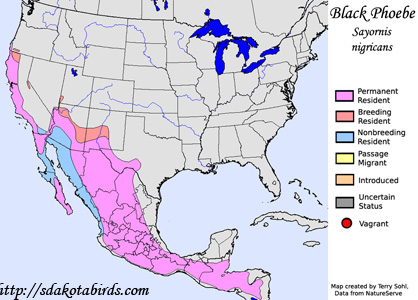 |
| South Dakota Status: Non-resident in South Dakota |
Additional Black Phoebe Photos
Click for a higher-resolution version of these photos
